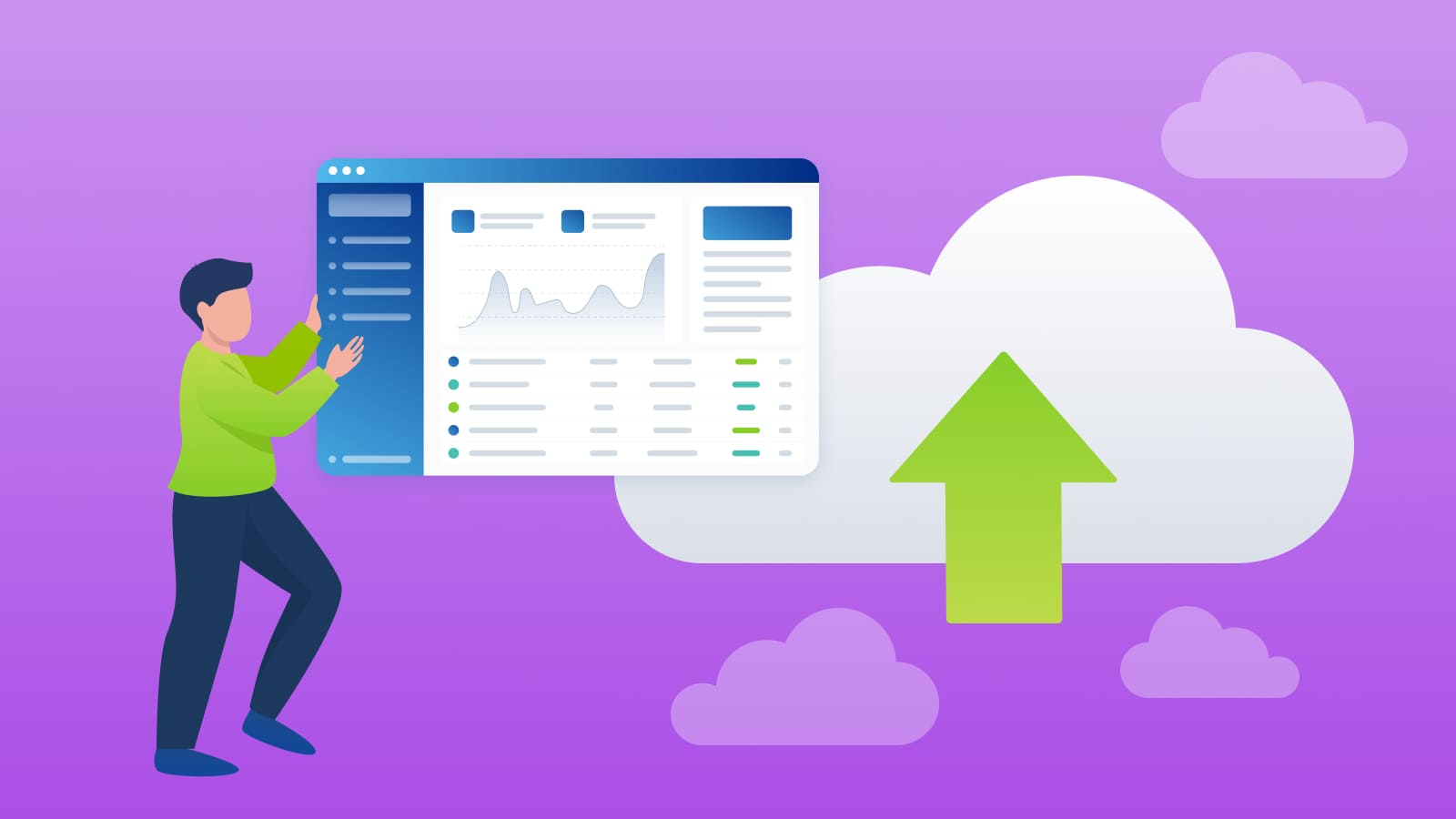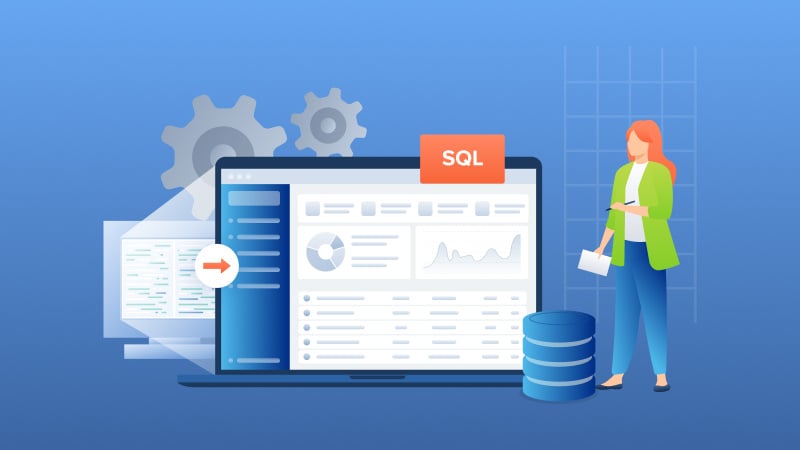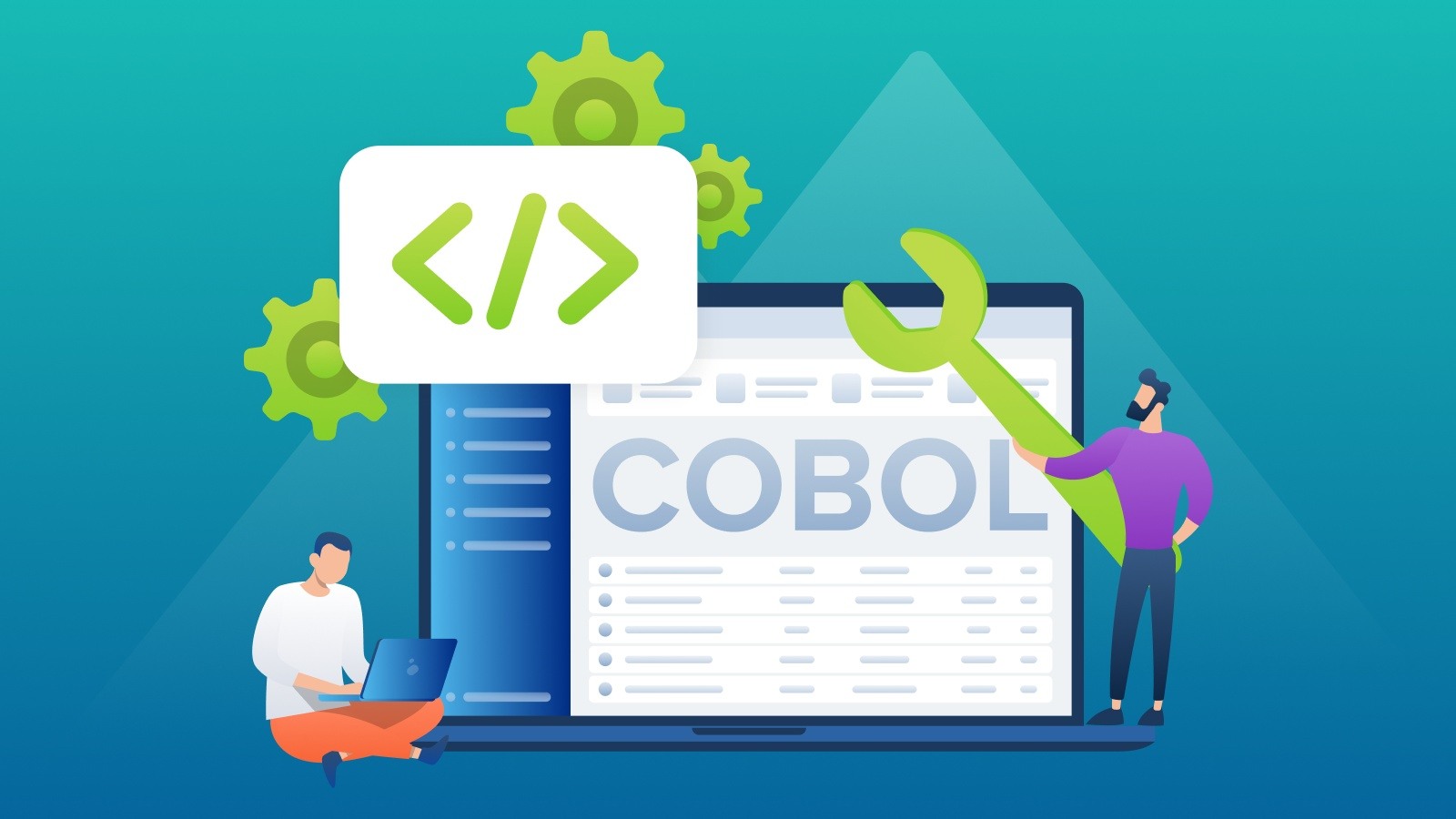Why Migrate from Btrieve to PostgreSQL and other Relational Databases?
Introduction Many independent software vendors (ISV) and corporate users still rely on applications that use a category of database collective called...
12 min read
 Mertech
:
Jul 6, 2024 9:05:00 AM
Mertech
:
Jul 6, 2024 9:05:00 AM

Cloud migration, the process of moving data, applications, and other business elements to a cloud computing environment, is reshaping the corporate world.
Unlike the era of costly on-premises software, the Cloud offers flexible, subscription-based services accessible across various platforms.
This shift is evident in the statistics: Worldwide end-user spending on public cloud services is expected to grow 20.4% in 2024, a total of $678.8 billion, up from $563.6 billion in 2023.
For Independent Software Vendors (ISVs), legacy to cloud migration presents both challenges and opportunities. While the pressure is on to adapt and meet market demands, the Cloud opens doors to new revenue streams and global competition without significant investment in physical resources.
Moving to the Cloud can definitely be challenging, but the rewards are worth it.
Let's explore all about cloud migration, including the different types, cloud migration processes, strategies, technologies, and more.
Cloud migration is the process of moving your digital operations from on-premises data centers to a cloud computing environment. This transition can also involve moving assets between different cloud platforms, known as cloud-to-cloud migration.
Key drivers of cloud migration include:
There are three main types of cloud migration, each with its unique approach and objectives. Understanding them is crucial in order to identify the most suitable path for your specific needs.
Let’s take a closer look:
This approach blends the use of different cloud environments, combining public clouds, private clouds, and on-premises data centers.
Hybrid cloud migration allows you to maintain a balance between scalability and control.
It's ideal if you're seeking the flexibility of the Cloud while retaining sensitive data in a private, secure environment. However, keep in mind that this method demands strategic integration between the various environments to ensure smooth operation and data flow.
Multi-cloud migration involves distributing your data and applications across multiple public cloud platforms. This strategy is designed to leverage the strengths and unique features of various cloud providers, offering robust backup solutions.
Multi-cloud migration is particularly beneficial if you want to avoid vendor lock-in. It can also help you achieve optimal performance by utilizing the best of different cloud services.
Suited mainly for smaller organizations, single cloud migration utilizes a single cloud provider’s platform. This makes it the most manageable option for businesses with limited requirements.
However, while it is simpler and often more cost-effective, single cloud migration may limit the diversity of available services and functionalities compared to hybrid or multi-cloud strategies.
IT leaders are increasingly turning to the Cloud to navigate the uncertainties of today's digital landscape.
Currently, over 41% of businesses are investing more in cloud-based services, 33.4% are planning on enterprise cloud migration, and 32.8% are migrating their on-premises workloads to the Cloud.
Additionally, cloud migration unlocks great advantages like:
Navigating the journey to the Cloud requires a well-thought-out plan and a clear understanding of the processes involved.
Let's explore the key strategies and practices that make cloud migration successful and streamlined:
Selecting the right strategy is pivotal to your cloud migration success.
Here is a breakdown of the main strategies and their use cases:
In rehosting (also known as lift and shift cloud migration), the primary goal is to migrate on-premises applications to the Cloud without changing their infrastructure.
The best part? The application's structure and functions stay intact.
This approach is a favorite among businesses looking for cost-effectiveness and simplicity. It's particularly beneficial if you have limited cloud expertise, allowing you to migrate quickly while minimizing the need for extensive resources.
Refactoring is a deeper dive into cloud migration.
Here, applications undergo a considerable redesign to fully embrace cloud-native features. Essentially, this involves breaking down your monolithic application into microservices, which enable you to access advanced features like autoscaling and serverless computing.
This strategy is a solid choice for businesses seeking enhanced performance and scalability.
While it demands more in terms of resources and time, the payoff is a significantly more efficient and agile application.
Relocating is about transferring a collection of servers from your on-premises platform to a cloud version of the same platform. This offers minimal disruption as it doesn't require any significant changes.
It's an ideal strategy for businesses that value continuity and want to avoid overhauling their application architecture. This approach offers relocating to a familiar operating environment while harvesting the benefits of cloud infrastructure.
Replatforming strikes a balance between minimal changes and optimization for cloud functionalities.
What does this mean exactly?
You will be able to retain the app's source code and architecture, but you will also benefit from cloud-based security and compliance standards, adding a layer of protection to your legacy systems.
It's an attractive option for those who want more than just a basic cloud presence but aren't ready for full refactoring. Businesses that replatform enjoy improved cloud capabilities without the complexity of extensive code rewrites.
In repurchasing, companies opt to switch out old systems for modern, cloud-based SaaS solutions. This reduces operational costs related to maintaining legacy systems in-house, allowing you to leverage advanced technologies and achieve better performance and user experience.
It's a suitable approach towards modernization that accelerates migration, reduces downtime, and enhances scalability.
The retiring strategy involves identifying and discontinuing specific applications that no longer serve your business.
This decision often comes after a thorough evaluation of the existing IT portfolio, where certain applications are deemed redundant or obsolete. By retiring these applications, you can streamline your IT infrastructure, focusing on modern, cloud-centric solutions that better align with your current and future needs.
On the other hand, retaining is a strategic choice to keep certain applications in their existing environment.
The motivation behind this decision typically lies in various factors, such as:
This represents a calculated approach, ensuring that every migration decision aligns closely with the business's strategic objectives and operational realities.
Cloud migration requires careful navigation at each phase of the process.
To have a successful transition of your business's digital assets and operations into the Cloud, you can follow our cloud migration best practices and tips.
Here, we offer the main steps you should include in your cloud migration project plan.
The first cloud migration step is all about laying the groundwork.
Here, you evaluate your current IT setup to determine if cloud migration fits your needs. Assess the potential risks like data loss or security breaches and analyze the interdependencies of your applications and databases.
Selecting the right migration strategy is crucial here, whether it’s rehosting, refactoring, or replatforming.
This stage involves crafting a detailed migration roadmap.
Set clear objectives, like cost reduction or scalability enhancement, and choose a cloud service provider that aligns with these goals. Identify the resources and tools needed for the migration, such as specific cloud services and project management software.
Now, the actual migration takes place.
This includes configuring and deploying cloud resources, transferring data, and testing the applications in their new cloud environment. Ensure each application functions as expected and meets performance standards.
With the migration complete, the focus shifts to managing your new cloud environment.
This includes monitoring cloud resources, performing regular maintenance, and addressing any emerging security concerns. Regular updates are key to maintaining a secure and efficient cloud infrastructure.
After successful migration, it’s time to fine-tune your cloud setup.
Monitor the performance of your cloud resources and applications, adjust configurations for optimal efficiency, and implement cost-saving measures offered by your cloud service provider.
The final step is making the full switch to the cloud environment. This involves ensuring all business operations run smoothly in the cloud and decommissioning any redundant on-premises infrastructure.
Cloud migration unlocks new markets and opportunities for businesses, revolutionizing how they access and utilize software components.
With the benefits of cloud migration, companies can expand their customer base, enhance accessibility, and efficiently use their software components.
Let's explore how this transition can catalyze your business growth.
Cloud migration almost never happens overnight. It is a gradual transition from traditional to cloud-based solutions.
This allows businesses to introduce cloud-based offerings with added accessibility, potentially increasing revenue through subscription models.
This strategic move helps you enhance customer relationships and expand market reach.
The Cloud offers unparalleled access, but businesses, especially those handling sensitive data, often hesitate.
The good news?
You can still store sensitive data on-site and expose only non-sensitive data to the Cloud.
This approach ensures compliance with industry standards like HIPAA and offers the flexibility of cloud infrastructure without compromising on security.
For many businesses, the prospect of developing new cloud-based applications can be daunting and resource-intensive.
However, leveraging existing software as the foundation for cloud apps reduces both cost and complexity. You can use different tools that allow developers to create web APIs and integrate with existing functions and data.
This strategy not only cuts down on development time and expense but also provides a solid base for more extensive cloud-based strategies.
While cloud migration comes with numerous benefits, it also poses a few challenges you should be aware of before deciding to implement it.
Let's explore the primary risks associated with cloud migration:
The shared responsibility model in cloud security demands vigilance from both the cloud provider and the business. While providers secure the infrastructure, you must safeguard data and applications, especially during the sensitive phase of data transfer.
The key to mitigating cloud migration security risks lies in robust data encryption, secure transfer protocols, and precise access controls.
Regular security audits, comprehensive staff training, and ongoing threat monitoring are also essential to ensure a secure transition. By integrating cloud security measures with existing protocols, you can effectively shield your operations against vulnerabilities.
Transitioning from traditional desktop applications to cloud environments often reveals a gap in cloud-specific skills among IT teams.
This challenge is twofold: retaining skilled personnel adept in legacy systems and retraining them for cloud competencies.
Currently, more than half of employers are either retraining current staff or hiring new staff to ensure they can integrate cloud technologies seamlessly in their operations.
Retraining involves hands-on training in cloud architecture, security, and management tools. Partnering with cloud providers for specialized training sessions can help bridge immediate skill gaps.
Furthermore, you should encourage adaptability and innovation among IT staff to facilitate a smoother migration and prepare the organization for future technological advancements.
Adapting the business logic during cloud migration involves rethinking and restructuring how business processes and rules function in a cloud environment.
This may require redesigning data models, workflows, and interfaces to suit cloud platforms. The process can be complex, especially for legacy systems deeply ingrained with outdated business rules and processes.
A successful adaptation involves a thorough analysis of existing business logic, identifying elements that can be directly moved, those that need modifications, and elements that may become redundant in the Cloud. It’s also crucial to leverage cloud-specific features like elasticity, managed services, and APIs to enhance functionality.
Often, existing IT setups, especially in legacy systems, are not directly compatible with cloud environments. This discord can manifest in different hardware requirements, software dependencies, or network configurations.
To tackle this, consider: Can your existing databases and applications run smoothly in the Cloud? Are there any hardware-bound functionalities that need reworking?
For instance, if you're relying heavily on custom-built servers, you might find it challenging to replicate these setups in a cloud environment.
Addressing these incompatibilities often involves strategic choices: either upgrading systems to be cloud-compatible or opting for cloud services that can accommodate legacy architectures.
While cloud platforms promise cost-efficiency, the reality can be complex, especially during the transition phase.
Key to managing costs is understanding the pricing models of cloud services – they are vastly different from traditional capital expenditure models.
To avoid unoptimized resource usage in the Cloud, you should have a clear plan for scaling resources, avoiding redundant services, and leveraging cost-management tools offered by cloud providers. Regular monitoring and adjustments based on usage and performance data help keep costs in check, ensuring that the cloud migration enhances, not hinders, your financial goals.
Having the right arsenal of tools and technologies is pivotal in ensuring a smooth, efficient, and secure transition to the Cloud.
Let's delve into the crucial technologies that make cloud migration not just feasible but also streamlined and effective.
Public cloud service providers offer a range of specialized tools designed to simplify and streamline the migration process.
The best part?
These tools are free (however, you still pay for the resources you use during the migration).
The downside?
The tools are platform-specific (so you wouldn't be able to use them if you want to adopt a multi-cloud strategy).
AWS (Amazon Web Services) offers a comprehensive suite of tools for migrating servers, applications, and data to its cloud platform.
The AWS Server Migration Service helps with migrating on-premises workloads to AWS. It simplifies the migration process by automating the replication of live server volumes to AWS and coordinating the creation of Amazon Machine Images. This ensures a consistent replication process, reducing the overall migration time and effort.
AWS also provides other tools like AWS Database Migration Service and AWS DataSync for specific migration needs.
Microsoft Azure’s migration tools focus on flexibility and integration.
The Azure Server Migration Service supports various migration scenarios including VM migration from platforms like VMware, Hyper-V, and other cloud providers.
Azure Migrate provides tools for assessment, migration, and optimization, allowing for a comprehensive approach to cloud migration. It offers features like Azure Site Recovery for seamless migration and Azure Database Migration Service for moving database workloads.
Google Cloud’s approach to server migration is encapsulated in Google Migrate for Compute Engine.
This tool specializes in streamlining migrations from VMware environments and other clouds like AWS EC2 and Azure to Google Cloud.
Google Migrate for Compute Engine stands out for its ability to decouple compute from storage, allowing for rapid migrations with minimal downtime. Additionally, Google offers Transfer Appliance for large data transfers and BigQuery Data Transfer Service for moving large datasets.
Third-party tools also facilitate a smooth and efficient transition.
But how do they differ from the above-mentioned cloud providers?
These tools allow you to support a multi-cloud architecture so you can easily migrate your workloads to various public and private cloud providers.
Let's delve into some notable tools that have gained prominence in this space.
Thriftly is a revolutionary tool that transforms existing business logic into web APIs effortlessly.
It enables developers to expose functions from existing software as web services without the need to rewrite code. This feature is especially beneficial for businesses aiming to leverage their current applications in a cloud environment, thereby reducing development time and cost.
Thriftly supports multiple programming languages and provides a gateway to convert existing software into SaaS offerings seamlessly. It can integrate seamlessly with a variety of platforms, making it a great cloud migration tool.
Tibco offers robust cloud integration solutions designed to connect any application, anywhere. It supports application integration, API management, and microservices development.
Tibco’s platform enables businesses to create and manage APIs in a secure, scalable environment, facilitating seamless data integration and connectivity across cloud and on-premises systems. It's particularly suitable for enterprises looking to modernize their IT landscape by integrating complex systems and processes into a cohesive, cloud-based infrastructure.
DreamFactory is a comprehensive suite for API management that allows for the instant creation of fully documented, secure, and RESTful APIs.
It stands out for its ability to connect to any SQL or NoSQL database and instantly generate APIs without writing any code.
DreamFactory simplifies the process of connecting databases, files, and external web services to any front-end, whether it be mobile, web, or IoT applications. It's particularly useful if you're migrating to the Cloud, as it provides a streamlined and efficient way to manage data across various cloud services.
Choosing the right partner is paramount to the success of your cloud migration endeavors.
Mertech is a reliable cloud migration expert with numerous successful projects behind our back. For example, we helped Freight Management Systems to leverage Thriftly and Microsoft Azure so they can successfully transition to a cloud API platform. This enabled them to integrate their Transportation Management System into a more dynamic, cloud-based environment.
Our expertise in cloud migration has also been recognized by Microsoft as we received the Microsoft Gold Competency in Cloud Platform award.
Ready to embrace the future of your business?
Let our cloud migration services transform your operational landscape and propel your business toward new heights of efficiency and innovation.
The duration of cloud migration varies greatly depending on the scale, complexity, and type of migration.
Small projects may take a few weeks, while large-scale migrations can take several months to a year. Planning and testing phases significantly influence the timeline.
Migrating to Azure typically involves:
Utilizing Azure Migrate and Azure Site Recovery can streamline this process.
Migration to AWS involves assessing your existing setup, choosing suitable AWS services, planning the migration, and executing it using AWS migration tools like AWS Database Migration Service and AWS Server Migration Service.
Continuous optimization post-migration is also crucial.
To migrate an Oracle database through the Azure Database Migration Service, you should:
To migrate SQL Server databases to Azure, you can use the Azure Database Migration Service.
This includes an assessment with Data Migration Assistant, deploying Azure SQL Database, and migrating data using the Database Migration Service.
On-premise to cloud migration involves choosing a cloud provider, preparing your data for migration, using tools like AWS Snowball or Azure Data Box for large datasets, and ensuring secure data transfer through encrypted channels.
Tools like Azure Migrate, AWS Migration Hub, and Google Cloud's Migrate for Compute Engine are effective for assessment, providing insights into your on-premises environment and helping plan the migration process efficiently.
Virtual machine migration in cloud computing refers to moving VMs from one physical server to another within the cloud environment.
It optimizes resource utilization and enables load balancing without disrupting the services.
SAP cloud migration involves moving SAP applications and data from an on-premise setup to a cloud environment.
This transition enables better scalability, performance, and flexibility while leveraging cloud computing benefits.
Cloud migrations can fail due to:

Introduction Many independent software vendors (ISV) and corporate users still rely on applications that use a category of database collective called...

COBOL applications are the foundation of numerous essential business functions, especially within the banking, insurance, and government sectors....

Imagine breaking free from the constraints of old, monolithic systems and embracing the agility and innovation of cloud-based solutions.